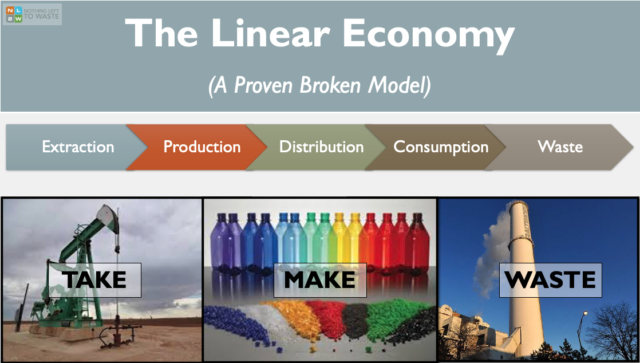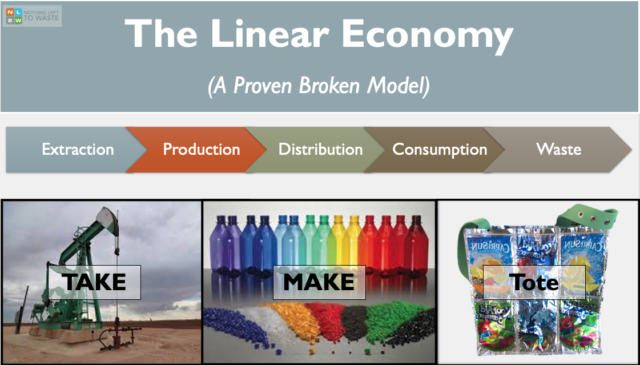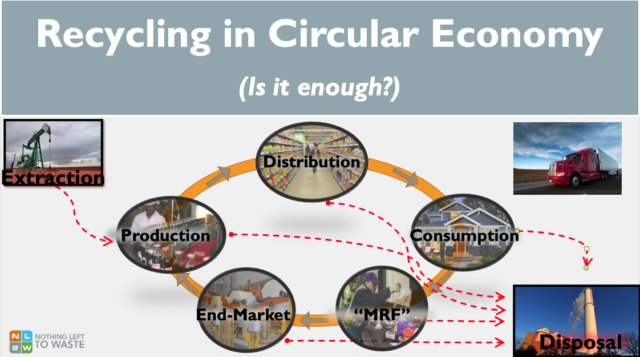When Does Recycling Work?
 Not all recycling is equal. How recyclables are managed after collection determines the real impact they have. Greenwashing has been a threat to recycling ever since the plastics industry first put the misleading chasing arrow number codes on plastics. Today, that threat has increased as some producers look to ensure their products are accepted in recycling as a way to assuage consumer concerns for the environment. False solutions including chemical recycling, advanced recycling and other waste to energy scheme don't move us away from a linear economy as we will continue to rely on extracting new resources (oil) to produce single use goods.
Not all recycling is equal. How recyclables are managed after collection determines the real impact they have. Greenwashing has been a threat to recycling ever since the plastics industry first put the misleading chasing arrow number codes on plastics. Today, that threat has increased as some producers look to ensure their products are accepted in recycling as a way to assuage consumer concerns for the environment. False solutions including chemical recycling, advanced recycling and other waste to energy scheme don't move us away from a linear economy as we will continue to rely on extracting new resources (oil) to produce single use goods.
Other false solutions come in the form of well intentioned efforts to keep your discards out of the trash. A program where you may ship small amounts of product  back and perhaps make "upcycled" tote-bags for instance. These "Marketing" solutions that provide niche uses for a small fraction of the material are neither scalable or sustainable. Some of these solutions may keep your waste out of landfills or incinerators (briefly), but they don't address the demand to continue extracting fossil fuels. The only way to effectively address waste is at its source. While reduction and reuse does this best, recycling solutions that provide circular feedstock sources to make new products are an important piece of the puzzle.
back and perhaps make "upcycled" tote-bags for instance. These "Marketing" solutions that provide niche uses for a small fraction of the material are neither scalable or sustainable. Some of these solutions may keep your waste out of landfills or incinerators (briefly), but they don't address the demand to continue extracting fossil fuels. The only way to effectively address waste is at its source. While reduction and reuse does this best, recycling solutions that provide circular feedstock sources to make new products are an important piece of the puzzle.
- Equitably protects the health of the community by reducing the need for extraction and disposal.
- Reduces both ups
 tream and downstream carbon emissions that contribute to climate change.
tream and downstream carbon emissions that contribute to climate change. - Contributes to local economic development and the creation of safe, good paying jobs.
Key Principles of Zero Waste Recycling
- Transparency and Accountability
- Local, Circular Supply Chains
- Community Control and Engagement
- Extended Producer Responsibility
- Incentivizes and Aligned with Reduction
